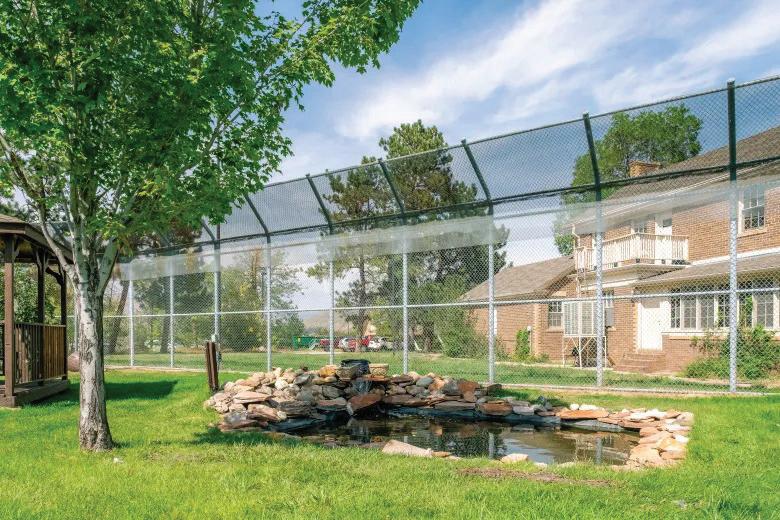
4 minute read
Juvenile violent crime is rising
Researchers look for answers
BY JENNIFER BROWN THE COLORADO SUN
Violent crimes that land kids and teens in Colorado’s youth corrections system are on the rise, accounting for 41% of admissions in 2022.
From homicides, to sexual assaults, to robberies at gunpoint, the violent crimes committed by young people have risen sharply during the past ve years, a climb that has sociologists studying the consequences of a virtually connected but physically isolated society and the long-term e ects of the coronavirus pandemic.
e percentage of young people sent to a Division of Youth Services facility for a violent crime was 35% in 2021, climbing to 41% in 2022, according to the agency’s recently released annual report.

at includes 54 young people held in detention for felony homicide, 47 for attempted homicide and 40 for sexual assault last year.
“All across the state, the level of violence that we’re seeing among young people is increasing,” said Anders Jacobson, youth services director. “ at’s been a stark reality for us.” e youth corrections system, which includes 15 state-operated, locked facilities, holds young people ages 10 to 21 either in detention — before their cases go to court — and after they are “committed” by a judge. Of the 176 children and teens who were committed to serve out a sentence last year, 71 were for violent crimes, including six murders and nine attempted murders. e result is that the population in the state’s youth corrections system has grown increasingly more violent and more likely than in prior years to have committed a crime against a person, rather than property. is year, 43% of young people committed to the system were sent for violent crimes, compared with 31% three years ago. e division in the past several years has moved toward pods, or living spaces, with fewer kids, and has improved its youth-to-sta ratio so young people have more attention, Jacobson said. It’s also ramped up behavioral health services, including for young people who are held in detention before their sentence has been determined.
“We’re pretty well versed in dealing with these types of young people, but there are certainly times when there’s a lot of emotionally charged issues that can take place,” Jacobson said.
It’s reached the point that, occasionally, the murder victim of one of the young inmates is a loved one of another young person held in the facility, he said. “It could have been a brother. It could have been a sister. It could have been a friend,” he said. “We’re seeing a lot more of those situations.”
Still, violent incidents within youth facilities in the state have not spiked. “ at’s something that we’re happy we’re seeing right now, but it’s a daily grind,” Jacobson said.
Nearly 80% of kids and teens committed to a Division of Youth Services center last year needed substance abuse treatment, according to the agency’s data. More than two-thirds of young people in the system need mental health treatment. e division’s behavioral health program, which includes two sessions of talk therapy per week for young people serving sentences, garnered national attention last year, winning a “program of the year” award from the National Commission on Correctional Health Care.
Since 2017, when the state legislature passed sweeping reforms and changed the name from Youth Corrections to Youth Services, the division has steadily reduced the use of physical restraint and solitary con nement. Repeat o enses also have dropped, with the one-year recidivism rate falling to 22% in 2020 compared with 41% in 2018. e rise in youth detention for violent crimes comes as overall juvenile arrests are declining in Colorado.
Crime rates, including among juveniles, hit records in Colorado and nationwide in the 1980s, then began dropping. In Colorado, the all-time high for juvenile arrests was 70,710 in 1997. By comparison, there were 19,442 juvenile arrests in 2018, according to the Colorado Department of Public Safety.
One of the safest stretches on record, based on crime rates, was 2010-2014, said David Pyrooz, a sociology professor at the University of Colorado Boulder. In the last several years, however, violent crime among young people has been climbing, and it isn’t due to the decisions made by police or prosecutors, he said.
“ ere is something that is taking place,” he said. “ ere is little doubt about that.”
Why violent crime is rising is harder to determine, considering researchers are still trying to understand the 50% reduction in crime rates that occurred nationally in the 1990s, the “criminological miracle,” Pyrooz said.

Now, sociologists are looking at how teenage behaviors — including spending more time at home alone, yet connected via social media and video games — might a ect violent crime rates. In the past, violent crime was often linked to groups of young people hanging out unsupervised in parks or street corners, Pyrooz said. e keys to keeping kids out of trouble are community support systems, including within families, schools and churches, Pyrooz said. “ ose are the things that really matter,” he said. “If those institutions are failing, so too are our kids.” is story is from e Colorado Sun, a journalist-owned news outlet based in Denver and covering the state. For more, and to support e Colorado Sun, visit coloradosun.com. e Colorado Sun is a partner in the Colorado News Conservancy, owner of Colorado Community Media.
Researchers are also just beginning to examine the pandemic’s e ect on youth crime, which could have repercussions for years to come, he said. Kids who stopped going to after-school activities and sports during the isolation of the pandemic, perhaps as fourth or fth graders, might not have returned to those sports, meaning they will miss out on those activities as middle and high school students, when they are more likely to get involved in criminal activity.
On average, there are about 290 children and teens serving sentences in youth corrections on any given day, 89% of them boys. e average length of stay is about 18 months. Juvenile criminal case lings increased by 15% last year in Colorado.










